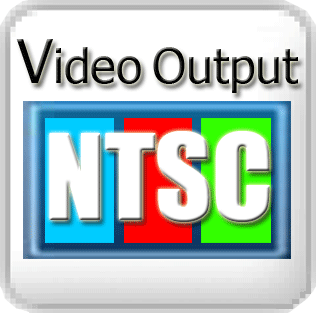

NTSC, named for the National Television System Committee, is the analog television system used in most of North America, most of South America (except Brazil and Argentina), Burma, South Korea, Taiwan, Japan, Philippines, and some Pacific island nations and territories. NTSC is also the name of the U.S. standardization body that developed the broadcast standard. The first NTSC standard was developed in 1941 and had no provision for color television.
NTSC is a color TV standard developed in the U.S. in 1953 by the National Television System Committee. NTSC uses a Frame consisting of 486 horizontal lines in the Active Area and a Frame-rate of 29.97fps. The frame is interlaced, meaning it's composed of two individual fields (pictures) with a Field-rate of 59.94fps.
NTSC's frame-rate has been the source of much confusion over the years. It was chosen in order to ensure backwards compatibility with older black and white televisions already in widespread use when the NTSC standard was developed. To add the additional color information, the frame-rate had to be slowed very slightly from the then standard of 30fps. In order to avoid major changes it was slowed by a factor of 1.001, resulting in an actual frame-rate of 29.97002997002997002997002997003 - an infinitely repeating decimal.
Various consumer digital video formats have standards designed to work with NTSC TVs. These include VCD, SVCD, DVD, and DV. Below is a table showing the standard Resolutions for each format. In the case of DV, the Full Frame represents the Active Area of the Frame, meaning you may need to resize and add borders to the sides when converting to other formats like MPEG-2 for DVD. DVD players may also implement the digital to analog conversion improperly, resulting in the Full Frame being squeezed into the analog video's Active Area.
HD Video Converter Factory Pro; it is powerful High Definition Video Converter and it builds in 150 video formats, it easily supports Multi-track HD video M2TS, MKV, AVCHD, HDTV BDAV and MPEG-TS video movies. Moreover, it is embed with numerous profile settings for Apple, Sony, Microsoft portable devices as well as iOS, Android, Symbian mobile Phones. Convert MKV to iPhone, convert MKV to iPad are good examples.
HDTV DTS MPEG-PS TS M2TS FFDShow AAC HD Video Pal SECAM Pixel
AVI MP4 MKV Video 3GP FLV MP3 Aspect Ratio 1920*1080 H264 MPEG-4 AVC AVCHD DTS TS FFDShow AAC HD Video Resolution QuickTime Video Encoder Audio BitRate Video BitRate Audio Channels Frame Rate Sample Rate Video Profile iPad iPod PSP iPhone Android Symbian DVD NTSC HD Video Flash FLV SWF YouTube WMV TS Video Editor Video Converter